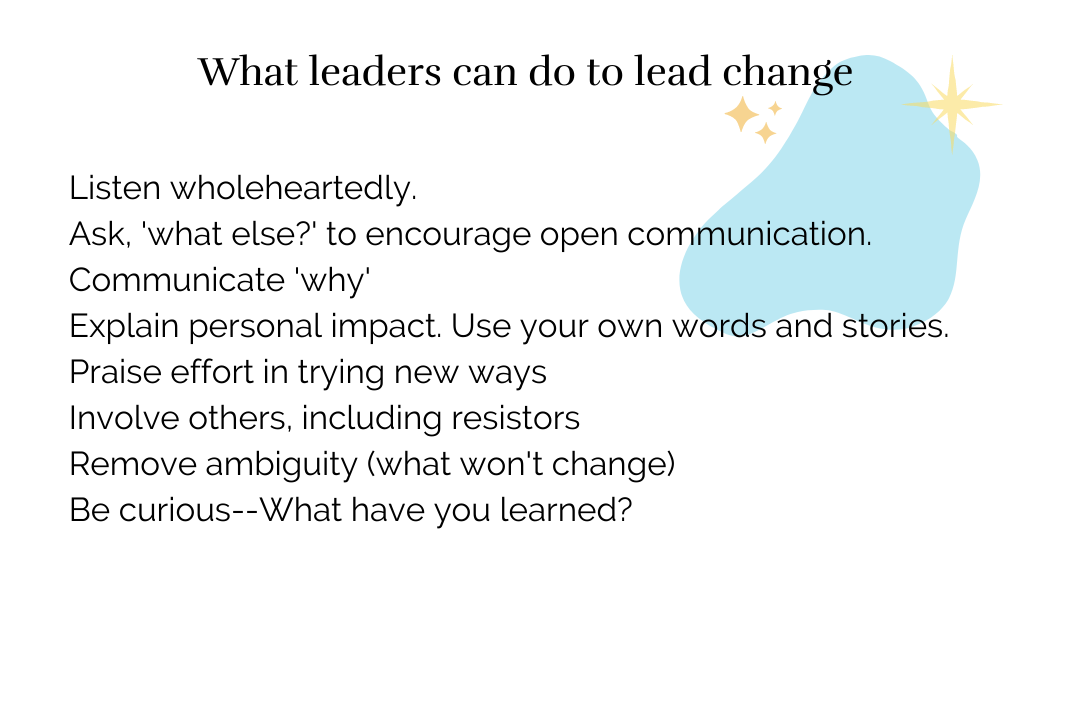
Free Leader Guide: Walk the talk
Oct 23, 2022Walk the talk
When leading change, someone IS always watching and evaluating.
Employees are trying to determine if the change is legit based on how leaders behave: Do actions match the words?
Trust is built when words and actions align. When leaders walk the talk.
Self-audit checklist for what to say to influence change
Every project has different details on 'why' and 'what'. Effective change leaders are:
- Optimistic. Hopeful about the future. They don't let fear steal the show. They talk about how not changing is not an option. They acknowledge the scariness of uncertainty.
- Other-oriented. They describe the 'why' and benefits of the change in an other-orientation (not about what they'll get out of it). They use shared shared values--such as customer-focus or a better employee experience--as a rationale for following this path.
- Plain speak. They keep jargon out of communications. They don't use acronyms! They are careful to introduce and explain project terms in simple language. They repeat new concepts and terms to bring people to shared understanding.
Change-savvy leaders also listen more than they talk. They ask great questions and consistently gather feedback in order to adjust their own language. They work to connect personally and emotionally. This helps people move from thinking to doing:
- How can I help?
- How do you feel about that?
- What do you see as the upsides of this change for you personally?
- What feels like the next best step for you to learn more about this change?
Open dialogue on the tough topics sends the message: "We're not going to pretend that this is easy." That builds trust, so long as the feedback helps identify possible solutions and ways forward.
Actions speak louder than words
Most leaders recognize the need to talk about the change. Exceptional change leaders understand actions are the proof point. What that looks like:
- Making the project a priority. Adjusting meeting schedules to address project issues as they arise. They actively participate in Governance meetings. They respond to requests from the project team with urgency.
- Getting peers and others involved. They take project topics to their leadership peers for feedback and resolution. They own tough issues and don't hand them off until resolved. They anticipate what their bosses and peers need and act as a conduit to bring them along.
- Asks the project team for risks and barriers that need leadership support. They don't wait to be told.
Change-savvy leaders continually ask:
- How else can I show support for this change?
Leaders show the way.

Putting words + actions together
When leaders put these two skills together, they create exponential impact to influence change. Their words paint the picture and their actions show they believe it. This is what it looks like to lead change.
The takeaway: The big presentations matter. But so do the small moments. Leaders have daily opportunities to build credibility through their words and actions.
Get smarter about change
Love these articles? Get them sent directly to your inbox.
No more hunting for good ideas to make change easier....from a trusted source.
We hate SPAM. We will never sell your information.

